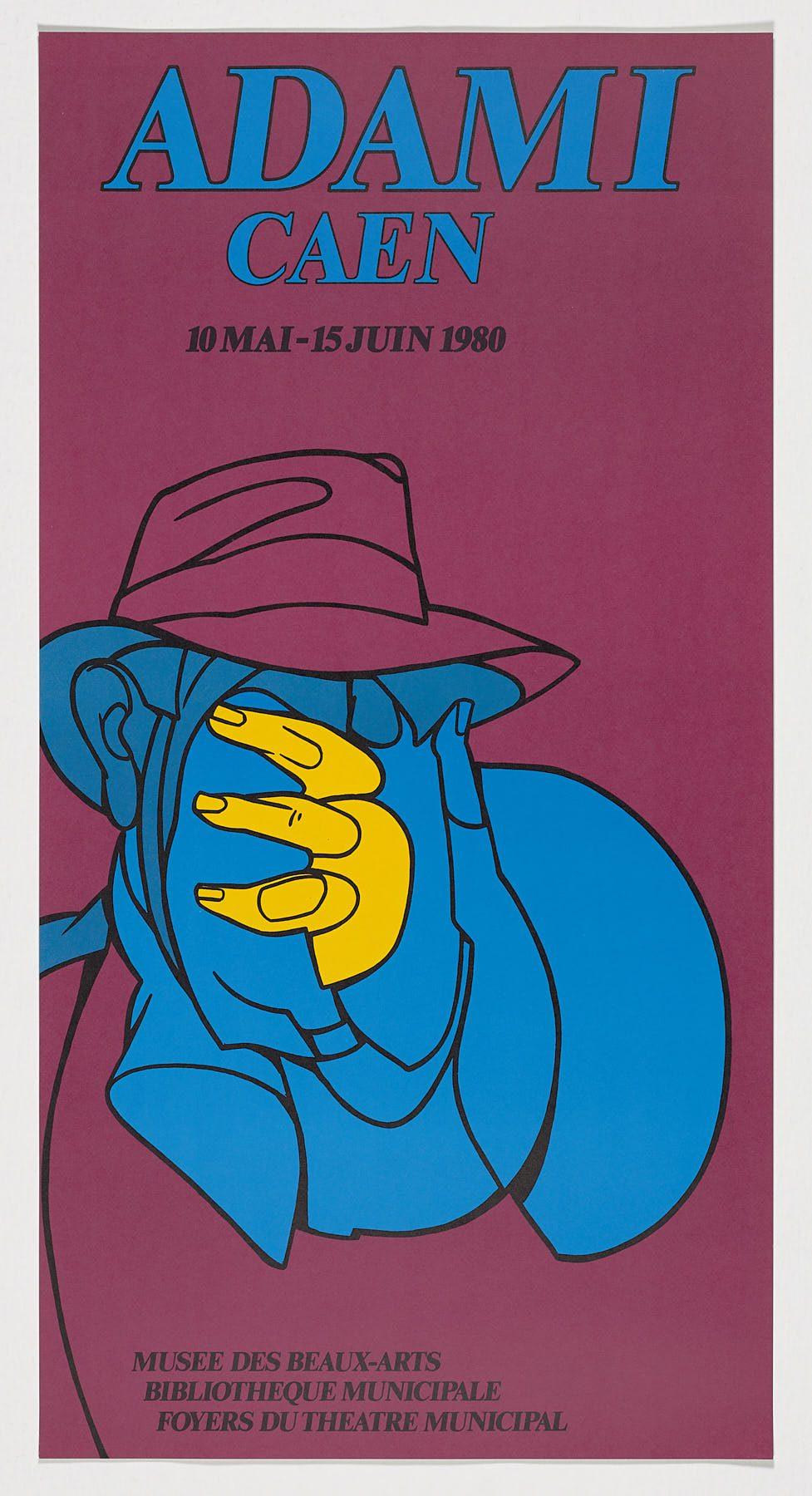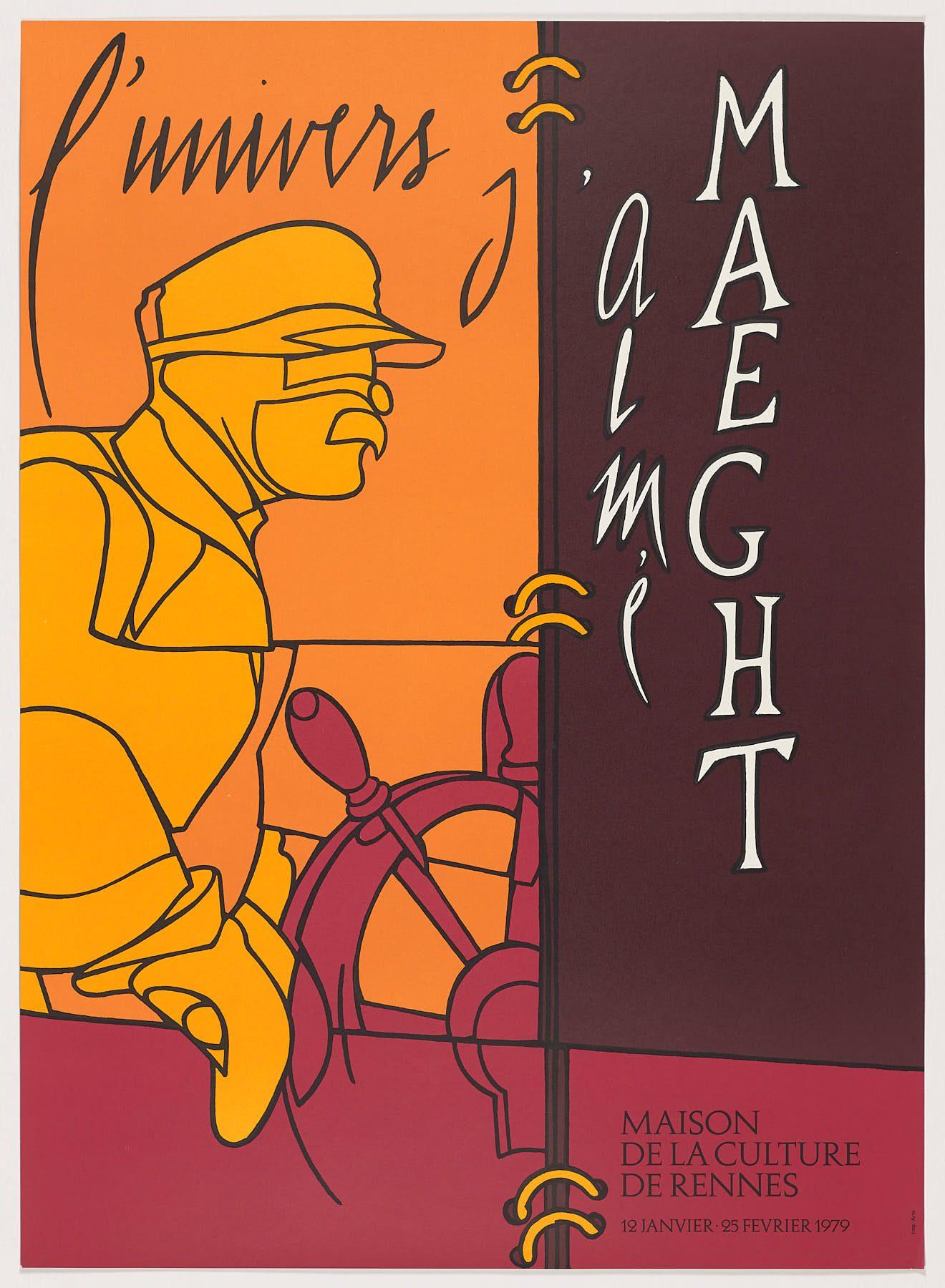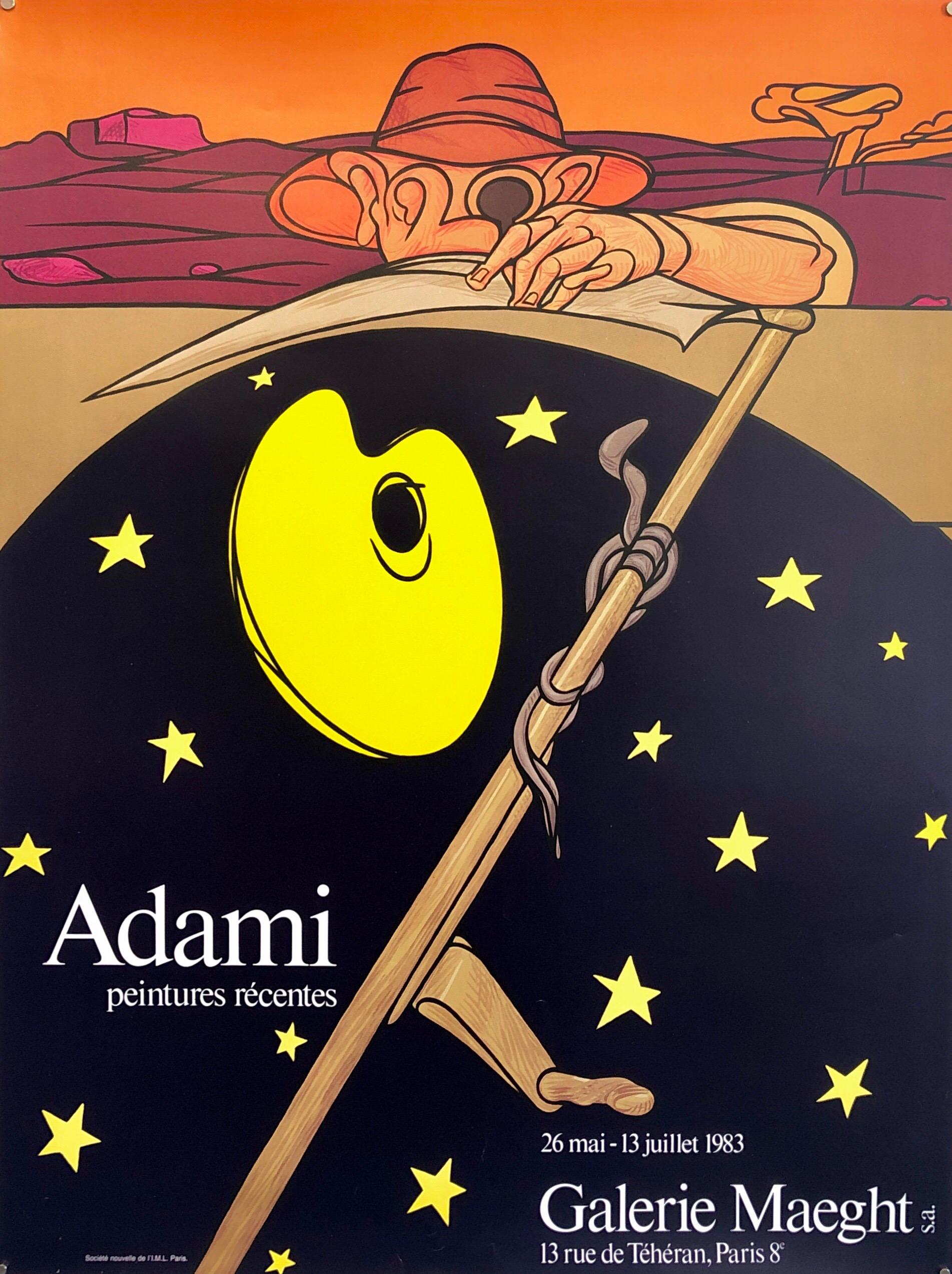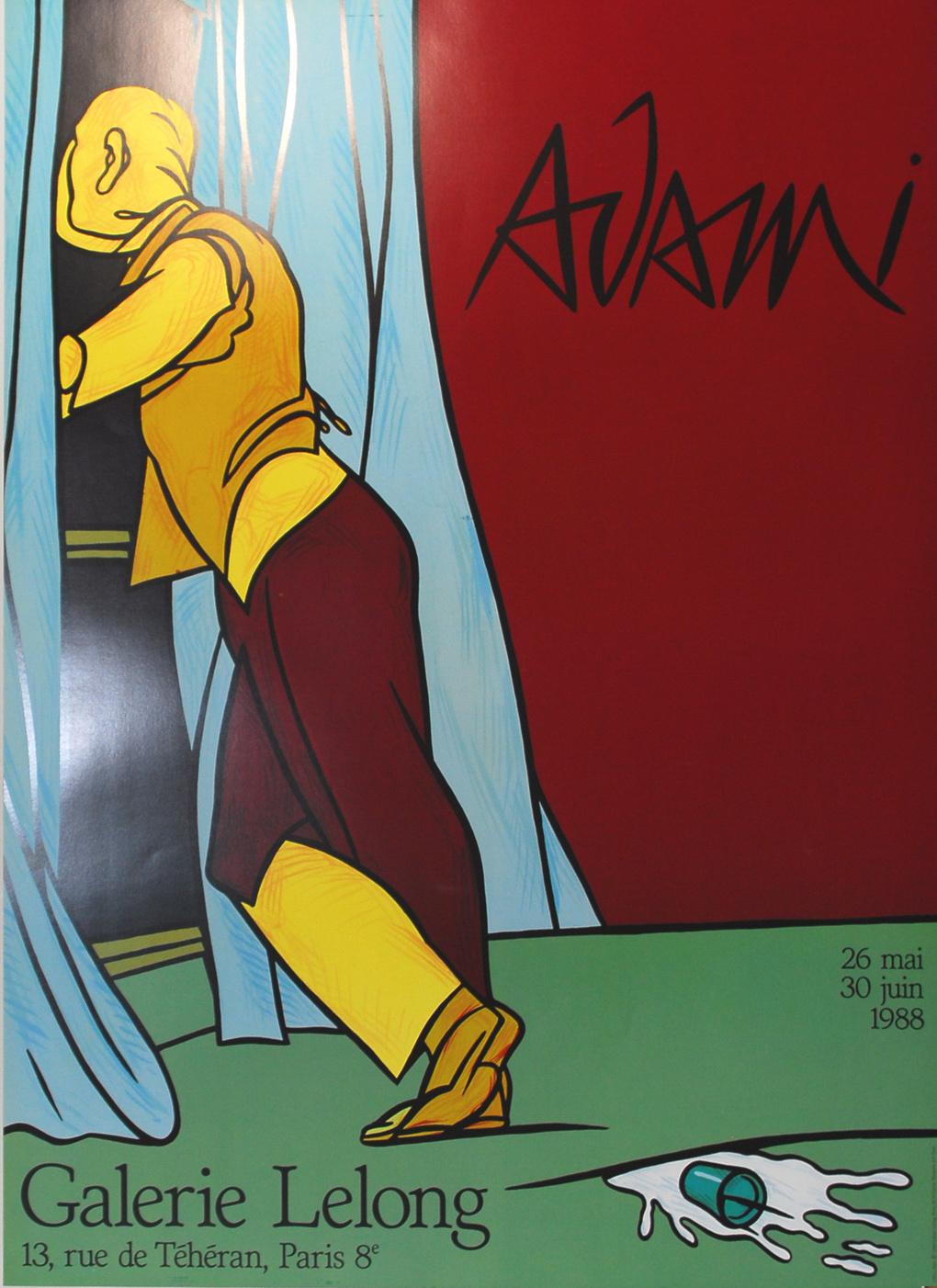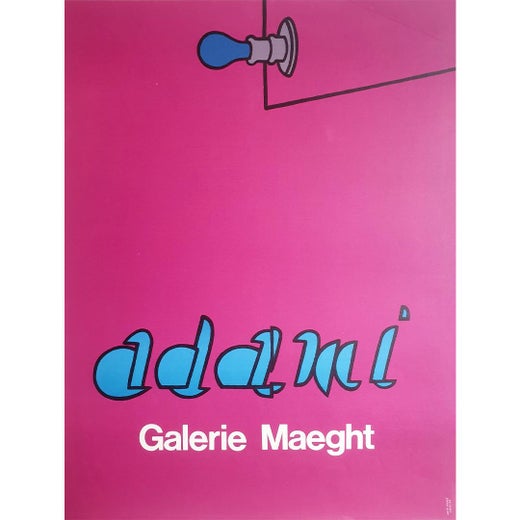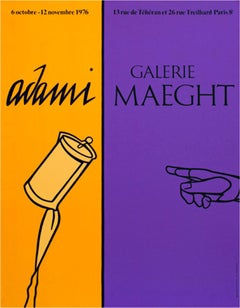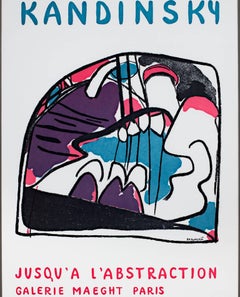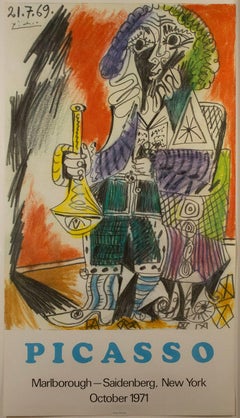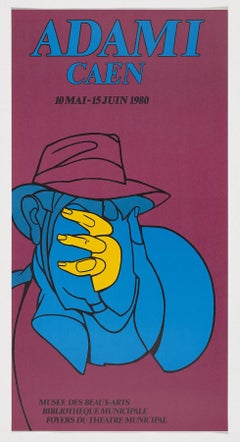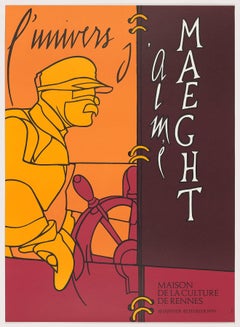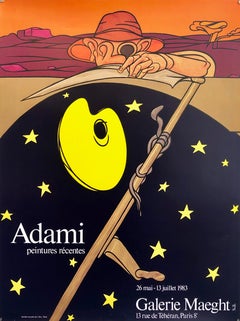"Musee National d'Art Moderne" is a po ster by Victor Brauner for an exhibition of his work in Paris. It features abstracted heads in yellow, orange, and blue, with a border in pastel pink, green, blue, and yellow. It is framed with gold moulding.
33 1/2" x 19 5/8" art
40 1/2" x 26" frame
Victor Brauner was born in Piatra Neamt, in 1903, and died in Paris, in 1966. He was the son of a timber manufacturer from Piatra Neamt who settled in Vienna with his family for a few years. It is there that young Victor attended the elementary school. When his family returned to the country (1914), he continued his studies at the evangelical school in Braila; he began to be interested in zoology in that period.
He attended the Art School in Bucharest (1919-1921) and H. Igiroseanu’s private school of painting. He visited Falticeni and Balcic and started painting landscapes à la Cézanne. Then, as he testified himself, he went through all the stages: "Dadaist, Abstractionist, Expressionist".
On September 26, 1924, the Mozart Galleries in Bucharest hosted his first personal exhibition. In that period he met poet Ilarie Voronca, together with whom he founded the "15HP" magazine. It was in this magazine that Brauner published the manifesto "The pictopoetry" and the article "The surrationalism". He painted and exhibited "Christ at the Cabaret" (in the manner of Graosz) and "The Girl in the Factory" (in the manner of Holder). He participated to the "Contemporanul" exhibition (November 1924).
In 1925 he undertook his first journey to Paris, from where he returned in 1927. In the period 1928-1931 he was a contributor of the "Unu" magazine (an avant-garde periodical of Dadaist and Surrealist conceptions), which published reproductions of most of his paintings and graphic works: "clear drawings and portraits made by Victor Brauner to his friends, poets and writers" (Jaques Lessaigne - "Painters I Knew").
In 1930 he settled in Paris, where he met Brancusi, who initiated him into the photographic art. In that same period he became a friend of the Romanian poet Benjamin Fondane and met Yves Tanguil, who would later introduce him to the circle of the Surrealists. He lived on Moulin Vert St., in the same building as Giacometti and Tanguil. He painted "Self-portrait with a plucked eye", a premonitory theme.
In 1933, Andre Breton opened Brauner’s first personal exhibition in Paris, at the Pierre Gallery. The theme of the eye was omnipresent: "Mr. K’s power of concentration" and "The strange case of Mr. K" are paintings that Andre Breton compared with Alfred de Jarry’s play "Ubu Roi", "a huge, caricature-like satire of the bourgeoisie".
In 1935 he returned to Bucharest. He joined the ranks of the Communist Party for a short while, without a very firm conviction. On April 7, 1935, he opened a new personal exhibition at the Mozart Galleries. Sasa Pana wrote about it in his autobiographical novel "Born in 02": "April 7, 1935… An exhibition surrealist in character.
The catalogue shows 16 paintings; they are accompanied by verses, surrealist images that are exquisite by their bizarreness - they are perhaps the creations of automatic dictation and they certainly bear no connection to the painting itself. They are written in French, but their colorful taste remains in the Romanian translation too. The exhibition brought about many interesting articles and takings of position regarding Surrealism in arts and literature."
Another remark about Brauner’s participation to Surrealist exhibitions: "Despite its appearance of abstract formula,… this trend is a point a transition to the art that is to come." (R. Trost, in the"Rampa" of April 14, 1935) In the "Cuvantul liber" of April 20, 1935, Miron Paraschivescu wrote in the article "Victor Brauner’s exhibition": "In contrast to what one may see, for instance, in the neighboring exhibition halls, Victor Brauner’s painting means integration, an attitude that is a social one, as far as art allows it. For V. Brauner takes attitude through the very character and ideology of his art." On April 27, he created the illustrations for Gelu Naum’s poetry collection - "The Incendiary Traveler" and "The Freedom to Sleep on the Forehead".
In 1938 he returned to France. On August 28 he lost his left eye in a violent argument between Dominguez and Esteban Frances. Brauner attempted to protect Esteban and was hit by a glass thrown by Dominguez: the premonition became true.
That same year, he met Jaqueline Abraham, who was to become his wife. He created a series of paintings called "lycanthropic" or sometimes "chimeras".
He left Paris in 1940, together with Pierre Malbille. He lived for a while in Perpignan, at Robert Rius’, then at Cant-Blage (Eastern Pyrenees) and at Saint Feliu d’Amont, where he was forcibly secluded. However, he kept in touch with the Surrealists that had taken refuge in Marseille. In 1941, he was granted the permission to settle in Marseille. Seriously ill, he was hospitalized at the "Paradis" clinic.
He painted "Prelude to a civilization" (now in the Gelman collection). After the war, he took part to the Venice biannual exhibition; he traveled to Italy.
In 1959, he settled in the workshop on Lepic St. In 1961 he traveled to Italy again. He settled in Varengeville, where he spent most of his time working.
In 1965 he created an ensemble of object-paintings full of inventiveness and vivacity, grouped under the titles "Mythologie" and "
Fêtes des mères...
